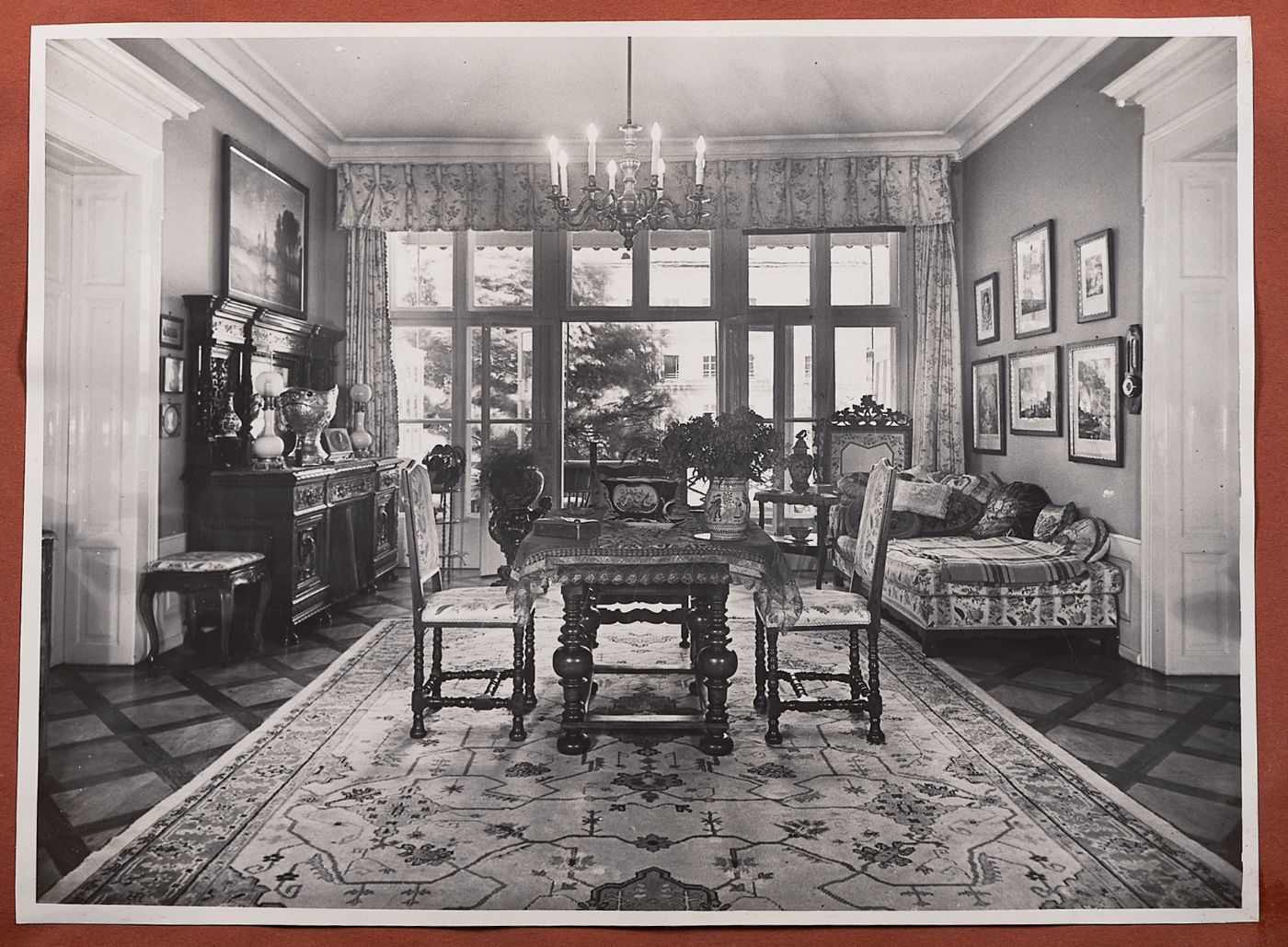"Dialogue with Franz"
In the 19th century, unknown owners build a two-story villa on the property directly on the Traun over a subordinate predecessor building, the “Höllwerthischen dwelling”.
In 1888, the Duke of Sabran-Pontevès has this villa rebuilt and an additional story added. Deviating from the building plans, a gable-shaped tympanum and a balustrade with vases placed on it are erected on the north façade.
Franz Lehár, who came to Bad Ischl for the first time in 1901 as a military bandmaster and met his future wife Sophie, acquires the villa with its outbuildings and inventory in 1912 for an estimated 68,000 crowns.
From then on, Franz Lehár and his wife spend the summers in their beloved house in Ischl. Numerous famous personalities, such as artists, librettists, and publishers, come and go here. Lehár’s best friend, Richard Tauber, lives in the house for some time until buying his own villa not far away on the Traunkai. Lehár always feels at home in his villa in Bad Ischl and says: “... in Ischl I always have the best ideas ...”.
He remains faithful to this place for 36 years, composing and completing masterpieces such as “Paganini”, “The Tsarevich”, “The Land of Smiles” and “Giuditta”, among others.

Shortly before his death on October 24th, 1948, Franz Lehár receives honorary citizenship of Bad Ischl. His grave is in the local cemetery. In his will, Lehár bequeaths the villa and the rear outbuilding to the town of Bad Ischl under the following conditions:
The villa is to be turned into a Franz Lehàr Museum. It has to serve exclusively the purpose of a Franz Lehàr museum and is to be kept in good condition. This villa and its present furnishings are to be left in the state in which they are taken over by the legatee. The furnishings in this villa, i.e. furniture, carpets, works of art, in short, everything that I have not disposed of elsewhere, must also be preserved by this legatee and used for the intended purpose.
Against this background, in view of the extensive restoration of the villa, the aim of the restoration was to show the building and furnishings as Franz Lehár left them, in order to give visitors the most authentic impression of the composer's living environment.
The title of the exhibition, “Dialogue with Franz”, refers to the discussion of all those questions and aspects that were unclear in this sense or that were necessary in terms of functional or technical improvements to the museum. At the same time, a dialogue was conducted with the fictitious builder Franz Lehár in order to make the respective decisions
